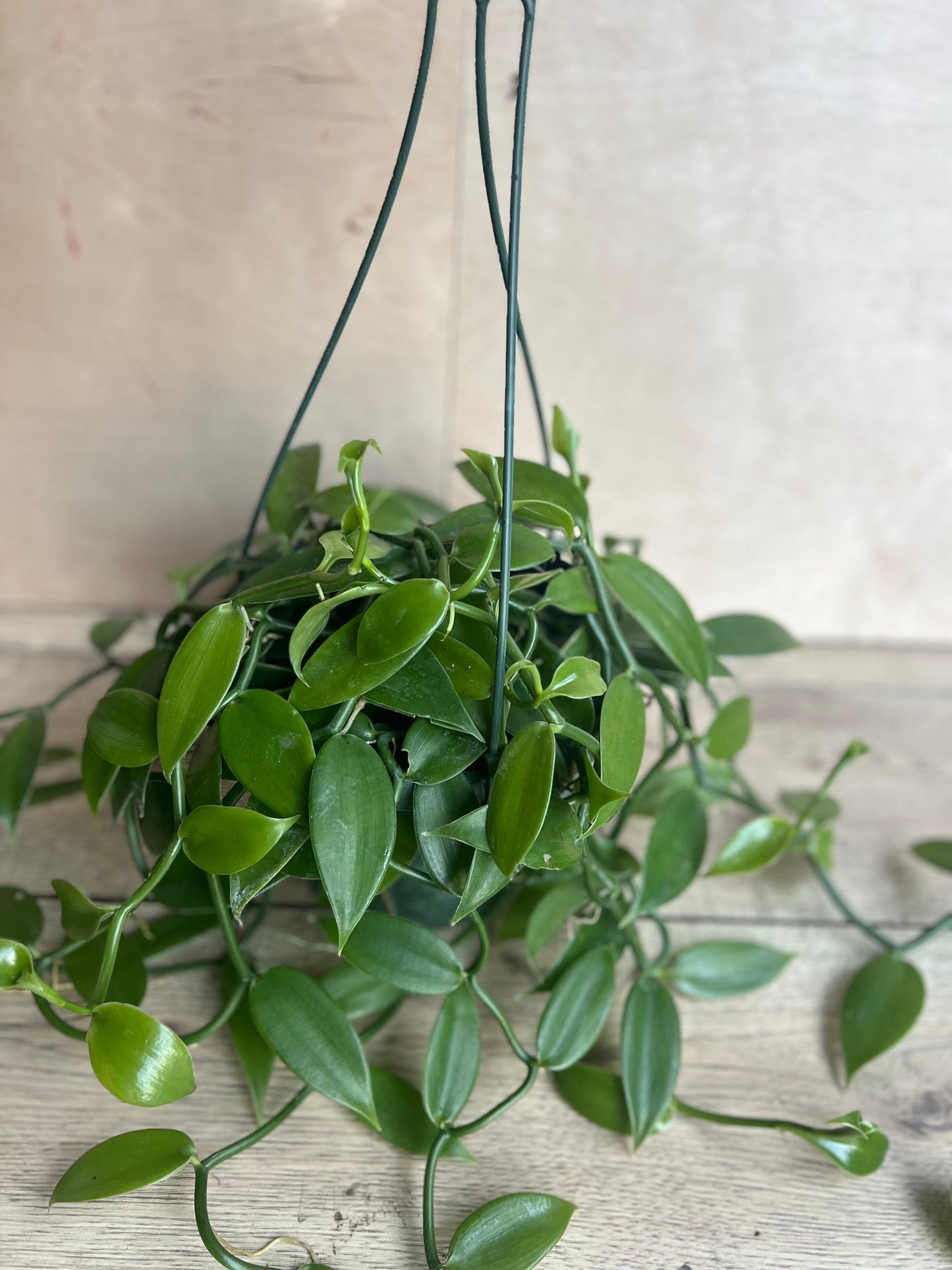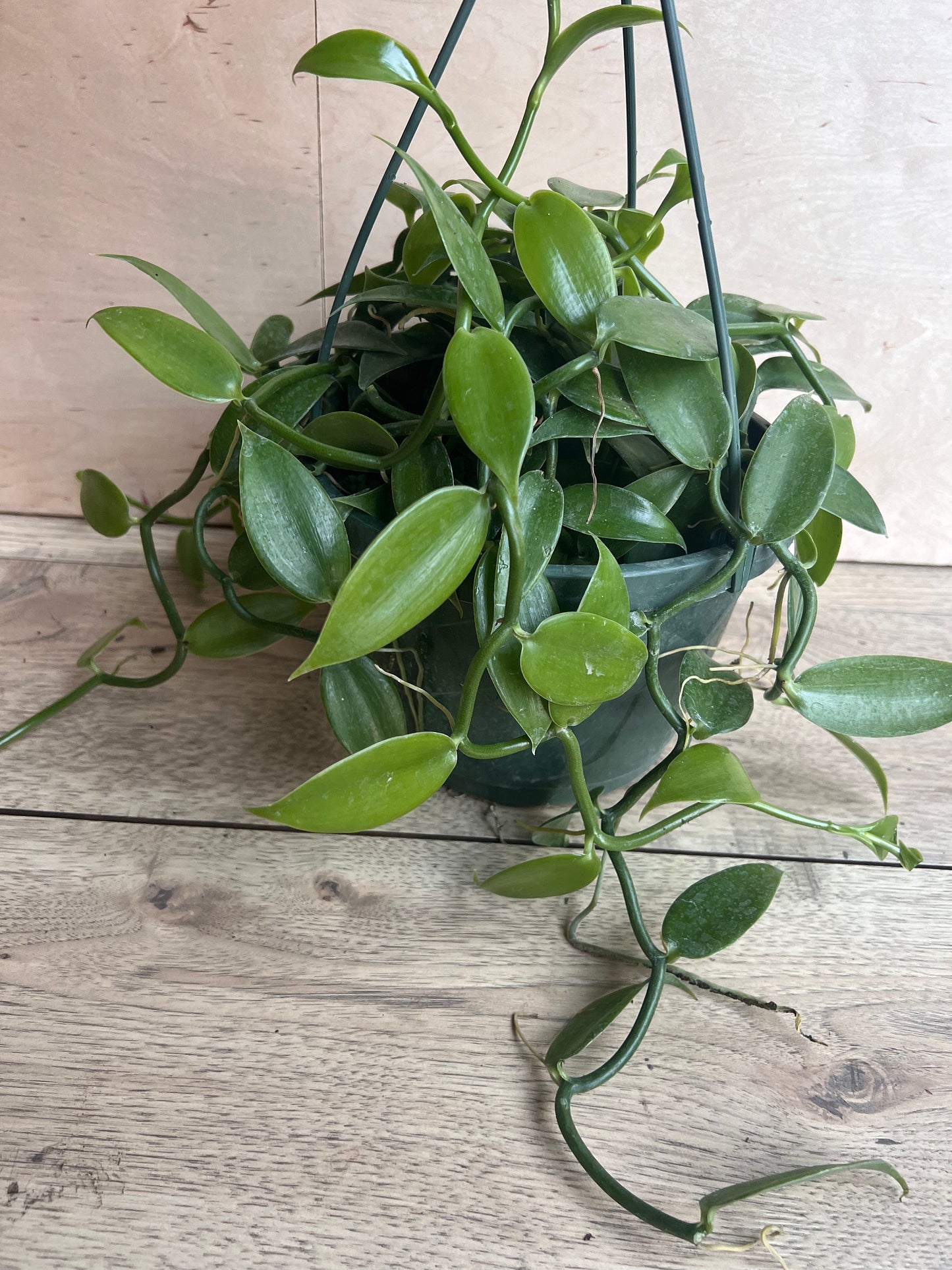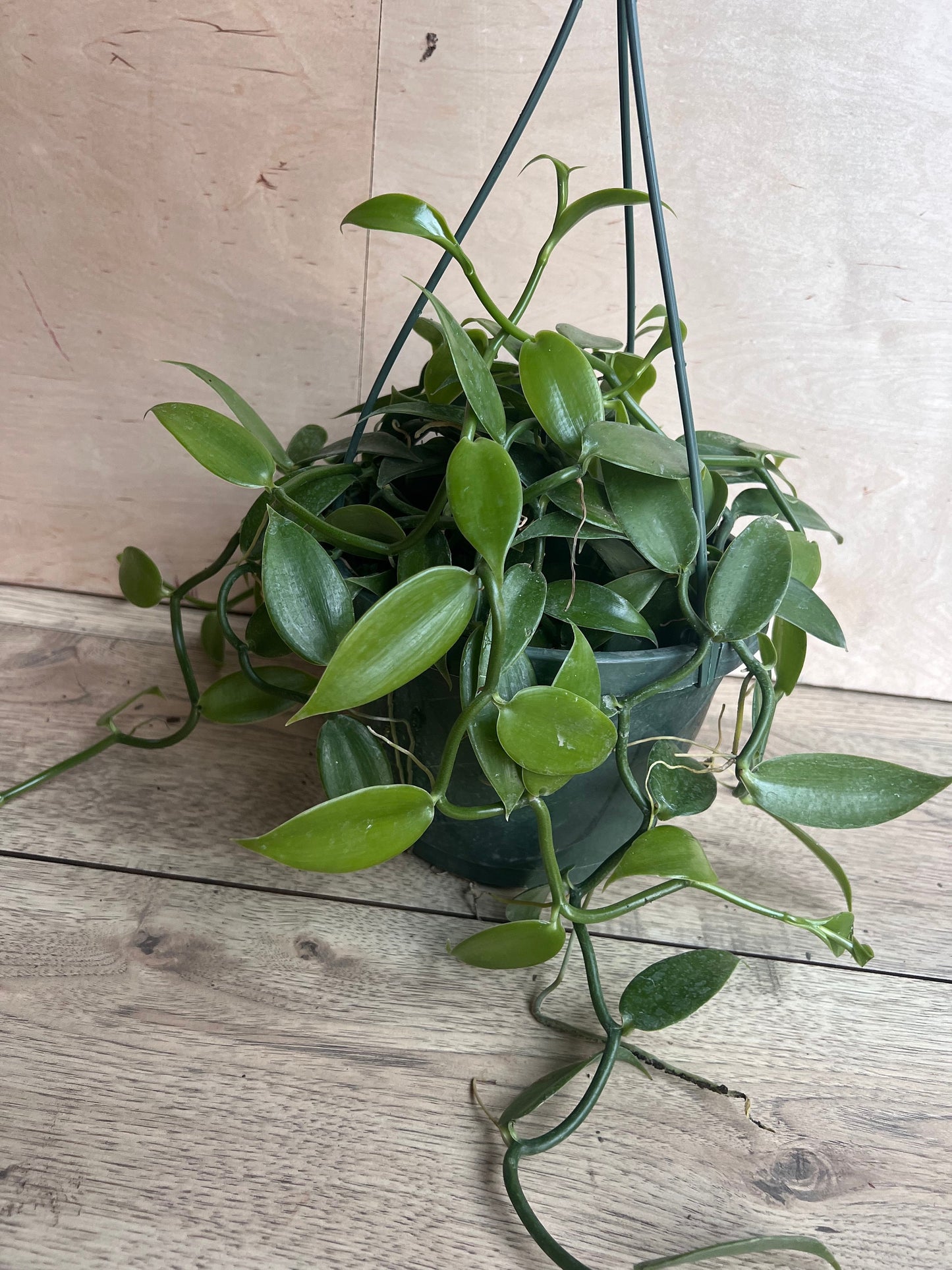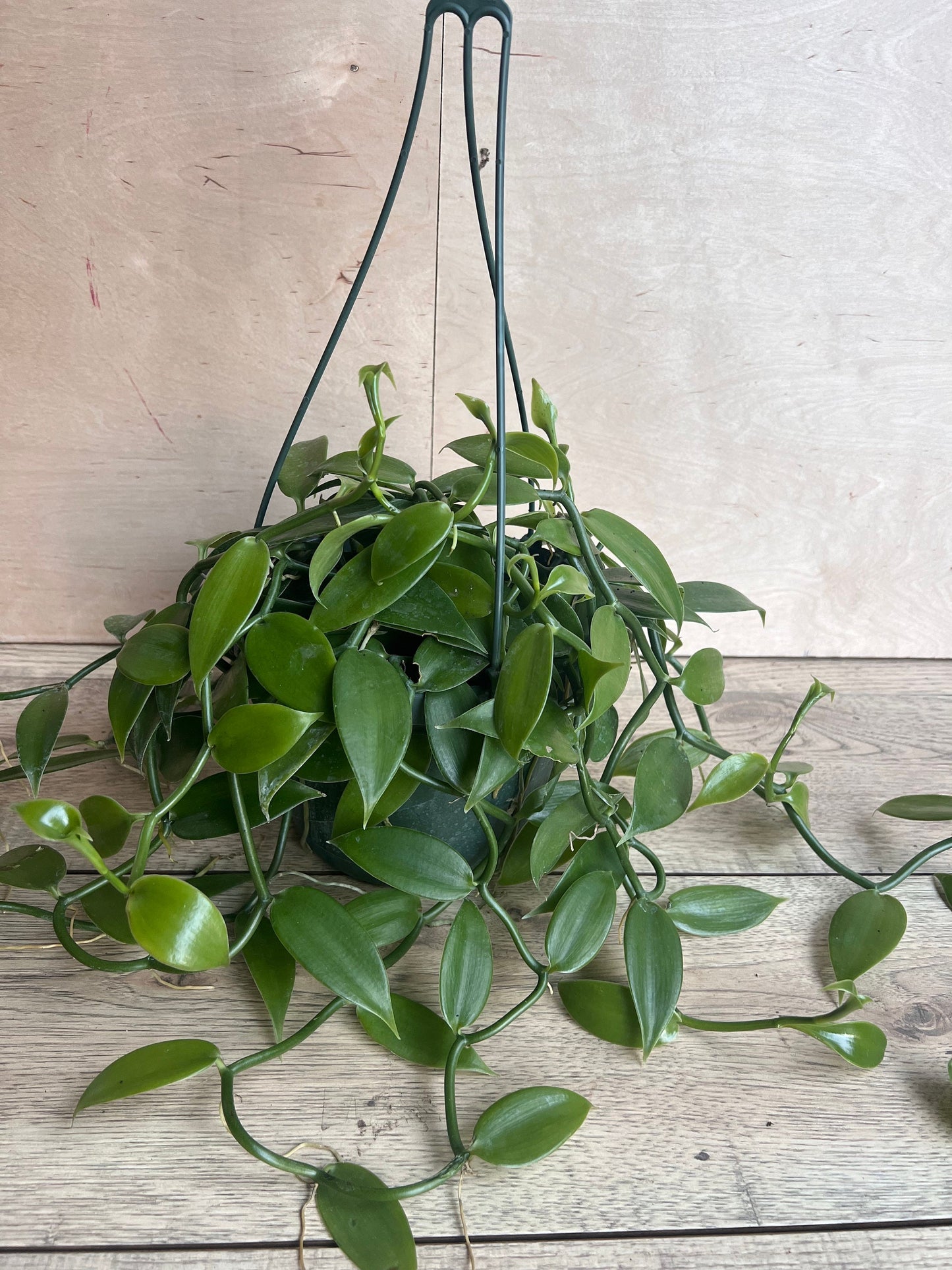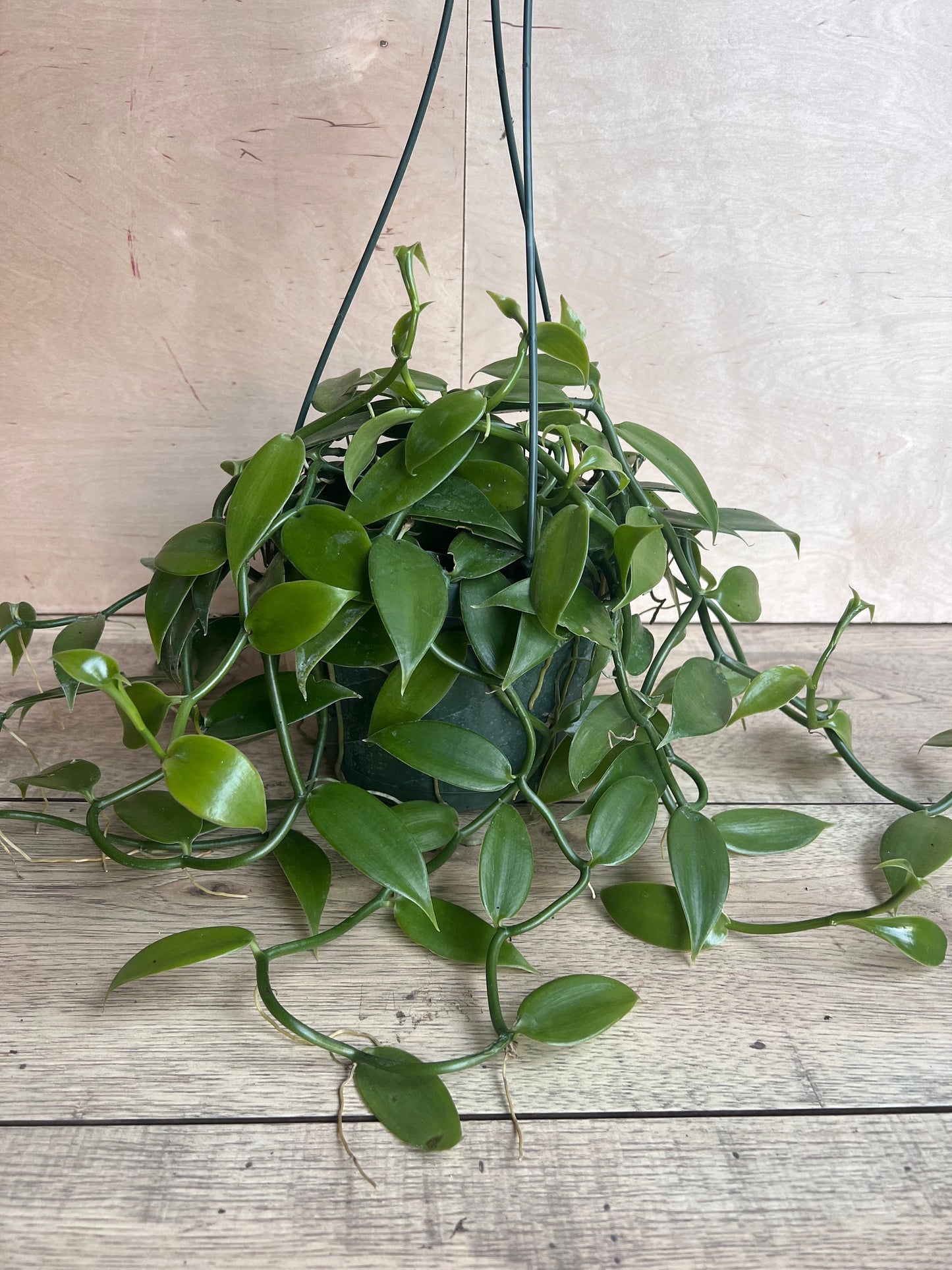Vanilla planifolia, vanilla bean orchid in 8"HB
Vanilla planifolia, vanilla bean orchid in 8"HB
Couldn't load pickup availability
Note: You Will receive vanilla orchid in 8"HB pot similar to the pictures
Madagascar Vanilla (Vanilla planifolia) is the world’s most widely cultivated and sought-after vanilla species, renowned for its rich, sweet flavor. Native to Mexico, it was introduced to Madagascar, which now produces 80% of the global vanilla supply. This tropical climbing orchid can grow up to 30 feet in length and requires a support structure, such as a trellis or moss pole, to thrive. The plant produces fragrant yellow flowers, which bloom for only one day, requiring hand-pollination outside its native range. After pollination, it takes 8-9 months for the vanilla pods to mature, and they undergo a curing process to develop the characteristic flavor.
Care Guide for Madagascar Vanilla (Vanilla planifolia)
-
Light Requirements
- Bright, Indirect Light: Vanilla plants require bright, indirect sunlight. Place near a window with good light but out of direct sun to avoid leaf burn. Artificial grow lights are suitable for indoor conditions with low light.
-
Temperature
- Warm Temperatures: Ideal temperatures for vanilla are between 75°F and 85°F (24°C to 29°C). They are sensitive to cold and should not be exposed to temperatures below 50°F (10°C). Avoid placing them near cold drafts or air conditioners.
-
Humidity
-
High Humidity: Being a tropical plant, Madagascar Vanilla requires humidity levels of 50% to 80%. Increase humidity by:
- Using a humidifier
- Misting the plant regularly
- Placing the plant on a humidity tray filled with water and pebbles
- Humidity is crucial: Low humidity can cause wilting leaves and slow growth.
-
High Humidity: Being a tropical plant, Madagascar Vanilla requires humidity levels of 50% to 80%. Increase humidity by:
-
Watering
- Even Moisture: Keep the soil consistently moist but never soggy. Ensure good drainage to avoid waterlogging.
- Watering Frequency: Water when the top 1-2 inches of soil feel dry. In warmer months, water weekly; reduce watering in cooler months.
- Water Quality: Use filtered or distilled water to avoid damage from chemicals like chlorine in tap water.
-
Soil
- Well-Draining, Aerated Soil: Vanilla thrives in light, loose, and well-draining soil. An orchid mix is ideal. If using potting soil, add perlite and bark for better aeration.
- Avoid Heavy Soil: Do not use dense, clay-based soil as it can retain too much moisture, causing root rot.
-
Support Structure
- Climbing Vine: Use a moss pole, trellis, or other vertical structures to support the plant's climbing nature. Periodically tie the vines to encourage upward growth and prevent tangling.
-
Fertilizing
- Balanced Fertilizer: During the growing season (spring and summer), feed the plant with a balanced, water-soluble fertilizer (such as 10-10-10) diluted to half strength. Apply once a month.
- Slow-Release Fertilizer: Organic compost or orchid-specific slow-release fertilizers work well. Avoid fertilizing in the winter when the plant is dormant.
- Avoid Over-Fertilizing: Too much fertilizer can harm the plant, so stick to recommended doses.
-
Pollination
- Hand Pollination: In regions outside of Mexico, where the natural pollinator (the Melipona bee) is absent, hand-pollination is necessary. The flowers bloom for just one day, so pollinate early in the morning using a fine brush or your finger to transfer pollen from the male part (anther) to the female part (stigma).
-
Flowering and Bean Production
- Slow Process: Vanilla plants generally begin flowering 3-5 years after planting. Once pollinated, it takes 8-9 months for the beans to mature.
- Curing: After harvesting, the green pods must undergo a lengthy curing process, including drying, sweating, and fermenting, to develop their rich flavor.
-
Repotting
- Every 1-2 Years: Repot the plant when it becomes root-bound or every 1-2 years. Choose a pot only slightly larger than the current one to encourage healthy root growth.
- Check for Rot: Inspect roots for rot during repotting and trim any damaged parts.
- Pests and Problems
- Pests: While generally resistant to pests, vanilla plants can occasionally attract mealybugs, spider mites, or aphids. Treat infestations with neem oil or insecticidal soap.
- Yellowing Leaves: Yellow leaves may indicate overwatering or nutrient deficiencies. Adjust watering and check for root rot.
- Propagation
- Stem Cuttings: To propagate, take a healthy cutting with a node and place it in a moist, well-draining medium. Once roots form (in a few weeks), transfer the cutting to a larger pot.
- Air Layering: Air layering involves creating roots on a section of the stem while still attached to the plant. Once roots develop, the stem can be cut off and potted.
Share
